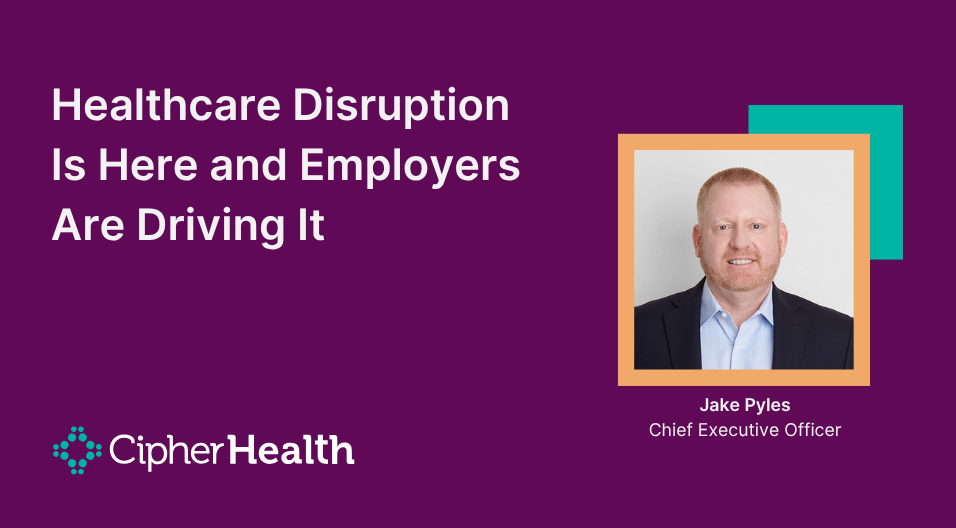Published in Fierce Healthcare
Many employers are keenly aware that the current healthcare landscape often prioritizes treating illness over promoting well-being. As healthcare costs continue their upward trajectory, with projections indicating an almost 8% increase in 2025, companies are exploring innovative solutions.
The traditional system, with its complex web of insurers, providers and intermediaries, has historically offered limited incentives for a fundamental shift towards proactive health management. However, employers, who bear a significant portion of these costs, are increasingly interested in models that emphasize wellness, offer greater transparency, and enhance the overall care experience.
This desire for change has led to the emergence of new third-party platforms and benefit innovators. Companies such as Transcarent and Collective Health are facilitating direct-to-employer healthcare models designed to streamline processes and reduce complexity. These platforms aim to improve efficiency, lower costs and enhance the healthcare experience for both employers and their employees, goals that have often been challenging to achieve within conventional insurance-driven frameworks.
A 2024 survey revealed that 75% of employer health benefit leaders are actively discussing direct contracting alternatives. Furthermore, 41% of those not currently engaged in such discussions plan to consider direct employer-provider arrangements by 2025. The primary drivers for exploring these direct healthcare contracts, cited by nearly half of the surveyed employers, are the promise of better benefits and lower costs. In essence, employers are seeking higher-value care for their workforce and believe that new partnerships and models can help deliver it.
A new chapter for traditional health systems
For hospitals and health systems, the rise of employer-led care models presents both a challenge and an opportunity.
Historically, health systems have largely relied on employer-sponsored insurance networks as a primary source of patient volume. Now, employers, motivated by rising costs and a desire for improved outcomes, are exploring alternative approaches. If a self-insured company chooses to contract directly with a specific provider network or leverages platforms like Transcarent to identify high-value options, local health systems may find that employees are seeking care outside traditional referral streams. Given the significant scale of employer health plans, these shifts represent a notable area of evolution in the healthcare market.
There is mounting evidence that these direct models can deliver on their promises, highlighting the importance for established health systems to adapt. Forward-thinking employers like General Motors and Intel have reported substantial savings, millions per month, through direct contracts with health systems. These savings are not solely a result of lower prices; critically, they also stem from enhanced care coordination and improved outcomes.
This evolving landscape encourages hospitals and health systems to consider how they can offer employers a compelling value proposition. Those health systems that embrace this trend and innovate their offerings may find new avenues for collaboration and growth, ensuring they remain key partners in providing high-quality care to their communities.
From threat to opportunity: Employers as partners in population health
Health systems increasingly see employers as allies in building a healthier population. Employers have a vested interest in keeping their workforce healthy and productive, which aligns closely with health systems’ goals in the era of value-based care. By treating employers as co-innovators, health systems can co-design programs for preventive care that keep people out of the hospital by addressing needs upstream.
Embracing employers in this way aligns with a patient-centric, population health approach. An employer-sponsored population is a defined community; working closely with that employer enables a health system to identify health risks, close care gaps and track outcomes in a comprehensive, data-driven way. The end goal for both parties is a healthier, more engaged patient (or employee) who has a seamless experience across their care journey.
Health systems that want to thrive in this new landscape need to act quickly and strategically. Key areas of focus include:
- Proactive, employee/patient-centered communication: To effectively manage health at scale, proactive outreach is essential. Health systems should engage patients beyond the four walls of the hospital, guiding them through their care journeys with timely information, reminders and support. Historically, employer-provider conversations have been transactional and reactive—annual negotiations or responding to care breakdowns. Now, health systems must adopt proactive outreach that continuously informs, educates, and engages both employers and employees.
- Integrated care coordination: One of the advantages of employer-sponsored direct care models is coordinated care across the continuum. Health systems should double down on integration. They should be ensuring that primary care, specialists, hospitals and post-acute services are connected and sharing data. This is especially applicable for the contextual data based on patient histories surfaced at the right moment in the patient journey to make each interaction feel informed and personalized.
- Digital access and convenience: Today’s workforce expects healthcare to be as convenient as any other modern service. To meet the bar set by employer health startups, traditional providers must improve digital access points. That means offering easy self-service scheduling, telehealth consults, proactive prescription affordability programs and digital outreach that reaches patients when and how they want to be reached.
Co-architects of a better healthcare ecosystem
The rise of employer-driven healthcare models is a signal that the old silos and incentives in healthcare are shifting. Traditional health providers can either see this as a threat to fend off or as a catalyst for positive change. The wise choice is to embrace employers as collaborators and co-architects in designing a more connected, patient-centered and value-driven healthcare ecosystem. Health systems have a profound role to play in this emerging landscape but it requires proactive leadership and openness to new partnerships.
Hospitals and health systems should lean into this movement. By working hand-in-hand with employer partners, they can develop tailored care solutions that improve health outcomes, enhance the patient (employee) experience, and reduce wasteful costs—thus demonstrating to employers that partnering with a health system can mean healthier employees and lower healthcare spend. In an era of high expectations, those health systems that proactively adapt will not only withstand the disruption, they will help lead the transformation.








